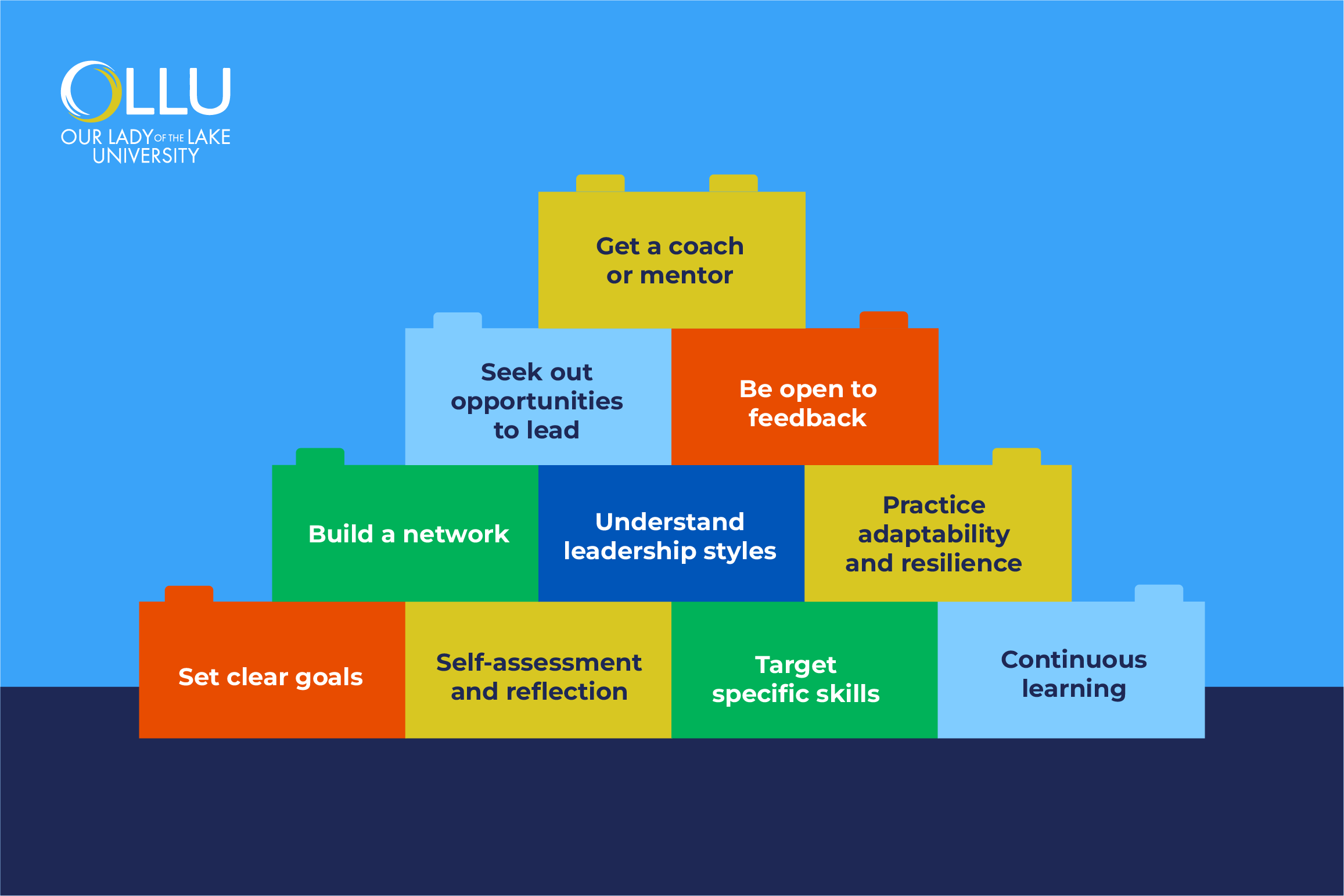How to Develop Leadership Skills? A Step-By-Step Guide
Aug 06, 2024

Leadership is more than the traditional notion of titles and hierarchies; it's about inspiration, influence, and the ability to guide teams toward a shared vision. It incorporates personality traits such as communication, vision, integrity, empathy, and decisiveness. Fortunately, effective leadership is a skill—and we're here to show you how.
We'll start by defining what makes an effective leader and the core qualities and traits of effective leaders. Then, we'll explain how to develop leadership skills step by step. Read on to find out why these skills make you an effective leader and help you achieve your goals faster.
What Makes an Effective Leader?
Effective leadership is characterized by a combination of core qualities and traits that enable individuals to guide, motivate, and inspire others toward achieving common goals. Key aspects of effective leadership include emotional intelligence, communication, and decision-making.
Leaders who embody these qualities inspire trust, motivate others, and achieve significant results across diverse organizational and societal contexts.
Top 5 Leadership Qualities
Effective leadership is crucial for guiding individuals and organizations toward success. Central to this ability are several key qualities that define exceptional leaders. These leadership qualities are interconnected and complementary, working together to create a cohesive leadership style that drives organizational success and fosters a positive work culture.
1. Vision
In the context of leadership, vision refers to the ability to see the "big picture" in an organization or industry. It involves having a clear sense of the organization's future state and communicating it to their team members in a compelling way.
2. Communication
Communication helps convey vision, goals, expectations, and feedback to team members and stakeholders. Leaders use communication to articulate messages and translate important data quickly and accurately.
Clear and transparent communication builds trust among team members and between leaders and their teams and, as such, fosters collaboration.
3. Integrity
Integrity is a valuable trait that refers to the adherence to a particular set of ethical and moral principles. In the context of leadership, integrity is critical in establishing trust, credibility, and respect within the team and among stakeholders.
Leaders who demonstrate integrity serve as role models for their team members. They demonstrate ethical behavior, transparency, and accountability in their actions, influencing others to uphold similar standards.
4. Empathy
Empathy is the ability to perceive and relate to the thoughts, experiences, or emotions of others and respond with compassion and sensitivity. In the context of leadership, empathy is a powerful tool that fosters trust, strengthens relationships, and enhances overall team dynamics.
Leaders who show genuine empathy toward others facilitate a positive work environment, which leads to enhanced job satisfaction, engagement, and overall wellness. Empathy also enables leaders to resolve conflicts constructively as it allows them to facilitate discussions, validate emotions, and help conflicting parties find common ground.
5. Decisiveness
Decisiveness is a valuable leadership trait that helps leaders make clear-cut and timely decisions with appropriate information. Decisive leaders stand firm and remain committed to the chosen course of action and pave the way for goal attainment.
They actively support the implementation of decisions, address any concerns, and provide guidance to team members.
How to Develop Leadership Skills?

Leadership skills can help you advance in your career, but how can you develop them? Here are some practical steps and strategies to build leadership skills.
1. Set clear goals
The first step in developing your leadership skills is setting clear goals that provide a roadmap for leadership development. For effective goal setting, you should follow the S.M.A.R.T approach, which provides clarity, focus, and structure to achieve personal and professional growth. SMART stands for:
-
Specific: Clearly define what you want to achieve and focus on particular outcomes
-
Measurable: Identify criteria to track your progress and determine when the goal is achieved
-
Achievable: Ensure the goal is realistic and attainable given your current skills and timeframe
-
Relevant: Align the goal with your broader leadership development needs
-
Time-bound: Set a deadline or timeframe to create a sense of urgency and motivate action.
2. Self-assessment and reflection
Authentic and effective leadership begins with a better understanding of yourself. Self-assessment and reflection are powerful tools that promote self-awareness, continuous learning, improved decision-making, relationship-building, resilience, authentic leadership, and personal growth.
To do so, you can utilize the popular self-assessment technique, SWOT, which involves:
-
Strengths: Recognize the attributes that set you apart from others
-
Weaknesses: Acknowledge areas or skills that may need improvement
-
Opportunities: Identify opportunities for growth and development
-
Threats: Recognize potential challenges that may hinder your effectiveness as a leader
You can also do so by scheduling reflection time each week or month, discussing with mentors and peers, or attending leadership workshops.
3. Target specific skills
The next step is to develop key competencies essential for effective leadership, such as communication skills, delegation, and decision-making.
You can do so by:
-
Asking for feedback from colleagues or mentors
-
Taking a skills assessment
-
Reflecting on past decisions and determining if they were well-informed and resulted in desired outcomes
After selecting which skills you want to target, you can set a goal, develop a plan to meet it and monitor your progress.
4. Continuous learning
Leadership and learning are inseparable. The ability to learn and adapt sets influential leaders apart from the rest. Continuous learning also allows leaders to stay ahead of the curve, foster innovation and creativity, improve organizational performance, and develop a learning culture.
Some resources you can utilize for leadership development include:
-
Online courses from platforms like Coursera, edX, and LinkedIn Learning
-
Executive education programs
-
Industry-specific workshops and seminars
-
Books like "Start with Why: How Great Leaders Inspire Everyone to Take Action" and "Leaders Eat Last: Why Some Teams Pull Together and Others Don't" by Simon Sinek
-
Articles by McKinsey & Company
5. Build a network
Building relationships with other leaders and professionals and expanding your network is invaluable for leadership growth and career advancement. Networking allows you to exchange ideas, practices, and industry insights with professionals from diverse backgrounds.
You can find networking opportunities by joining professional organizations and attending industry events, conferences, and webinars.
6. Understand leadership styles
Next, you must determine what kind of leader you want to be. Different organizations and work environments need different leadership styles. For example:
-
Transactional leadership involves motivating subordinates by exchanging rewards for desired performance
-
Transformational leadership intends to encourage, motivate, and inspire subordinates to perform well and create meaningful change in the organization
-
Situational leadership takes a different approach to leadership based on the follower's knowledge, competency, and motivation level
To identify your leadership style, you should reflect on the feedback you received, research your leadership style, and undertake an online self-assessment to find what works best for you.
7. Practice adaptability and resilience
The business world is dynamic and uncertain. Therefore, adaptability and resilience are crucial qualities for effective leadership. They help leaders respond quickly to unexpected market or organizational priorities changes, bounce back from setbacks, and maintain focus during challenging times.
Some of the strategies you can use to adapt to change and overcome challenges include:
-
Monitoring industry trends to anticipate potential changes and opportunities
-
Seeking opportunities for personal and professional development
-
Being flexible to alternative viewpoints and perspectives when making decisions
8. Seek out opportunities to lead
One of the best ways to hone your leadership skills is to step out of your comfort zone and put your capabilities to the test. Hands-on learning and applying leadership skills provide opportunities to handle challenges and make decisions, strengthening resilience and adaptability as a leader.
To do so, communicate your desire to take on leadership responsibilities to your manager or team leaders. Look for organizational projects or committees that align with your strengths and interests—volunteer for leadership roles in cross-functional projects or task forces that require leadership skills.
9. Be open to feedback
Feedback is an integral component of continuous improvement and effective leadership. It provides valuable insights into your strengths, weaknesses, blind spots, and areas for improvement that may not be apparent to you. Also, it improves your ability to fix mistakes quickly and learn from others.
Soliciting and receiving feedback fosters open communication and trust within your team or organization. To do so, make sure to:
-
Be specific in your request
-
Listen attentively to the feedback
-
Reflect on the insights shared
-
Develop plans to implement improvement methods
10. Get a coach or mentor
A coach or a mentor can provide guidance, support, and advice, helping you better understand yourself and your goals. When choosing a mentor or coach, look for someone experienced and respected leader who can give you constructive feedback.
Your mentor or coach could be an employer who always challenges you to do better or a local business owner you're friendly with. You can also look toward your professional network to find a mentor or coach who can keep you on the fast track to leadership success.
Conclusion
Leadership is a journey, not a destination. From setting goals to seeking support from a coach or mentor, there are many ways to improve your leadership skills. Keep in mind that there isn't a one-size-fits-all approach to leadership. It's a self-development process that takes time, introspection, and commitment.
Now is the time to take action. Stay committed, stay passionate, and keep moving forward.
Frequently Asked Questions:
What are the top 3 leadership skills?
The top three leadership skills are communication, vision, and decision-making.
How do you develop leadership practice?
Leadership practice involves actions and strategies leaders implement to help their team better themselves and attain growth. To develop leadership practice, you should build genuine connections with team members, become a visionary, prioritize clear communication, and encourage feedback.
How to develop leadership skills in the workplace?
You can develop leadership skills in the workplace by setting clear goals, targeting specific skills, participating in continuous learning activities, understanding different leadership styles, and seeking opportunities to lead.